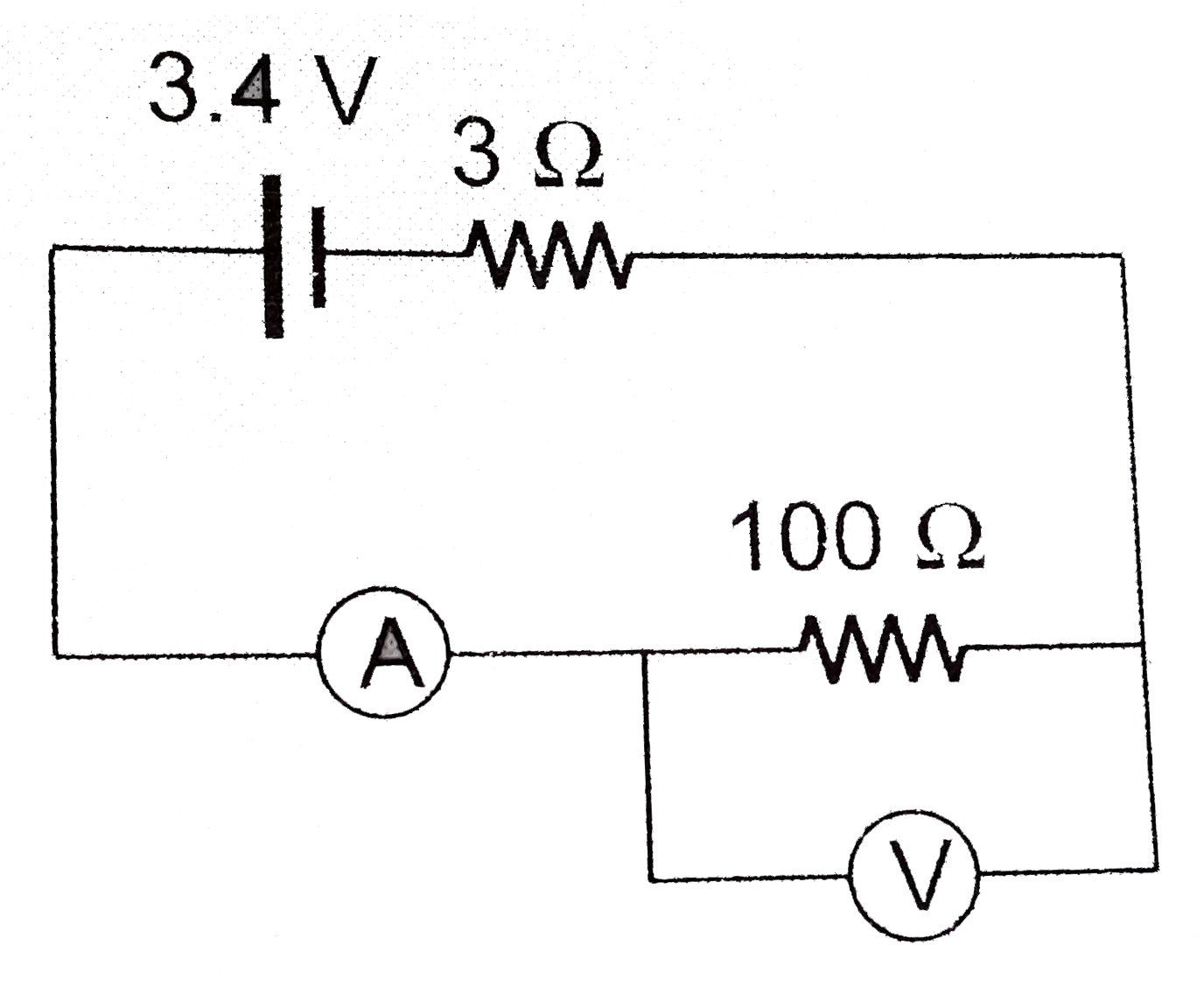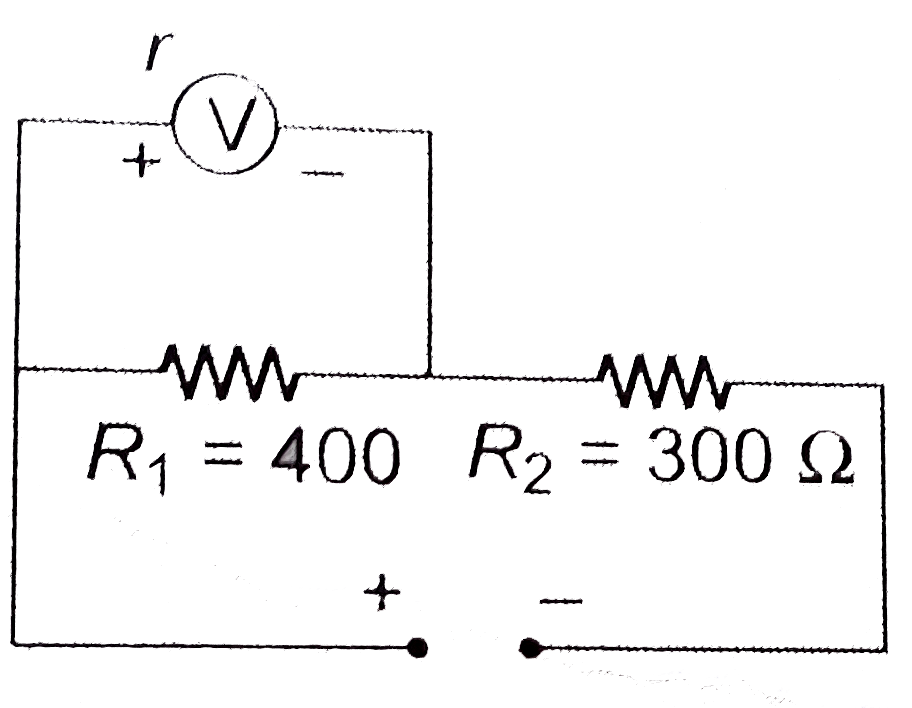When a voltmeter is put across a part of the circuit, does it record slightly less or more than the actual voltage across that part? Explain.
When a voltmeter is put across a part of the circuit, it draws some current from the circuit. Due to it, the potential difference across that part becomes less than actual. As a result of it, voltmeter will record slightly less than the actual potential difference across that part.
Topper's Solved these Questions
- BOOK - PRADEEPCHAPTER - MAGNETIC EFFECT OF CURRENT AND MAGNETISMEXERCISE - Conceptual Problems (d)2videos
MAGNETIC EFFECT OF CURRENT AND MAGNETISM
- BOOK - PRADEEPCHAPTER - MAGNETIC EFFECT OF CURRENT AND MAGNETISMEXERCISE - Very Short Answer Questions (a)2videos
MAGNETIC EFFECT OF CURRENT AND MAGNETISM
- BOOK - PRADEEPCHAPTER - ELECTROSTATICSEXERCISE - ASSERTION-REASON TYPE QUESTIONS2videos
ELECTROSTATICS
- BOOK - PRADEEPCHAPTER - OPTICSEXERCISE - Multiple choice questions1videos
OPTICS
Similar Questions
A galvanometer with a coil of resistnace 12.0Ω shows full scale deflection for a current of 25 mA. How will you convert the meter into:
(i). An ammeter of range 0 to 7.5 A.
(b). A voltmeter of range 0 to 10.0 V
Determine the net resitance of the meter in each case. when an ammeter is put in a circuit, does it read (slightly) less or more than the actual current in the original circuit? when a voltmeter is put across a part of the circuit, does it read (slightly) less or more than the original voltage drop? Explain.View SolutionWhen an ammeter is put in series of a circuit, does it record slightly less or more than the actual current in the circuit ? Explain.
View Solution
Knowledge Check
- Question 1 - Select One
In a series L−C−R circuit, currenrt in the circuit is 11A when the applied voltage is 220V. voltage across the caspcitor is 200V. If the value of resistor is 20Ω, then the voltage across the unknown inductor is
AzeroB200VC20VDnone of these - Question 2 - Select One
Statement I: The resistance of an ideal voltmeter should be infinite.
Statement II: Lower resistance of voltmeters gives a reading lower than the actual potential difference across the terminals.AStatement 1 is true, Statement 2is True , Statement 2 is correct explanation for Statement 1.BStatement 1 is True, Statement 2 is True, Statement 2 is NOT a correct explantion for Statement 1.CStatement 1 is True, Statement 2 is False.DStatement 1 is False, Satement 2 is True.
A galvanometer with a coil of resistance 120 ohm shows full scale full scale deflection for a current of 2.5 mA. How will you convert the galvonometer into an ammeter of range 0 to 7.5 A ? Determine the net resistance of the ammeter. When an ammeter is put in a circuit, does it read slightly less or more than the actual current in the original circuit ? Justify your answer.
View SolutionIn a series RC circuit, R = 30 ohm, C=0.25μF, V=100V,ω=10000rad/s. Find the current in the circuit and calculate the voltage across the resistor and capacitor. Is the algebraic sum of these voltages more than the source voltage ? If yes, resolve the paradox.
View SolutionWhen a parallel plate capacitor is charged by connecting it across a battery then battery is disconnected. If one plate of capacitor is earthed and isolated then another plate is connected to earth and then isolated. What will be the final charge on the capacitor after this operation. Will it be less than, equal to or more than the initial charge? Explain why?
View SolutionDraw the circuit diagram of an electric circuit containing a battery of 6 V, a key , an ammeter , a resistor of 4Ω in series with a combination of two resistors of 8Ω each in parallel, and a voltmeter across the parallel combination.
(a) Calculate the resistance of the circuit .
(b) Find the current flowing in the circuit.
(c) What will be the voltage across the parallel combination of resistors?View SolutionWhen an alternating voltage of 220 V is applied across a device X, a current of 0.25 A flows which lags behind the voltage in phase by π2 rad. If the same voltage is applied across another device Y, the same current flows but now it is in phase with the applied voltage.
(a) Name the devices X and Y.
(b) Calculate the current flowing in the circuit when the same voltage is applied across the series combination of X and Y.View Solution(a) A cell of emf 3.4V and internal resistance 3Ω is connected to an ammeter having resistance 2Ω and to an external resistance 100Ω. When a voltmeter is connected across the 100Ω resistance the ammeter reading is 0.04A. Find the voltage read by the voltmeter and its resistance. Had the voltmeter been an ideal one, what would have its reading ?

(b) Two resistances of 100Ω and 200Ω are connected in series with battery of emf 4V and negligible internal resistance. A voltmeter of resistance 200Ω is used to measure voltemeter of resistances separately. Calculate the voltmeter indicated.
( c) In the circuit shown, a voltmeter reads 30V when it is connected across the 400Ω resistance. Calculate what the same voltmeter will read when it is connected across the 300Ω resistance ?

(d) An ammeter and a voltmeter are connected in series to a battery of emf E=6.0V. When a certain resistance is connected in parallel with the voltmeter. the reading of the ammeter is doubled. while voltmeter reading is reduced to half. Find the voltmeter reading after the connection of the resistance.View Solution

